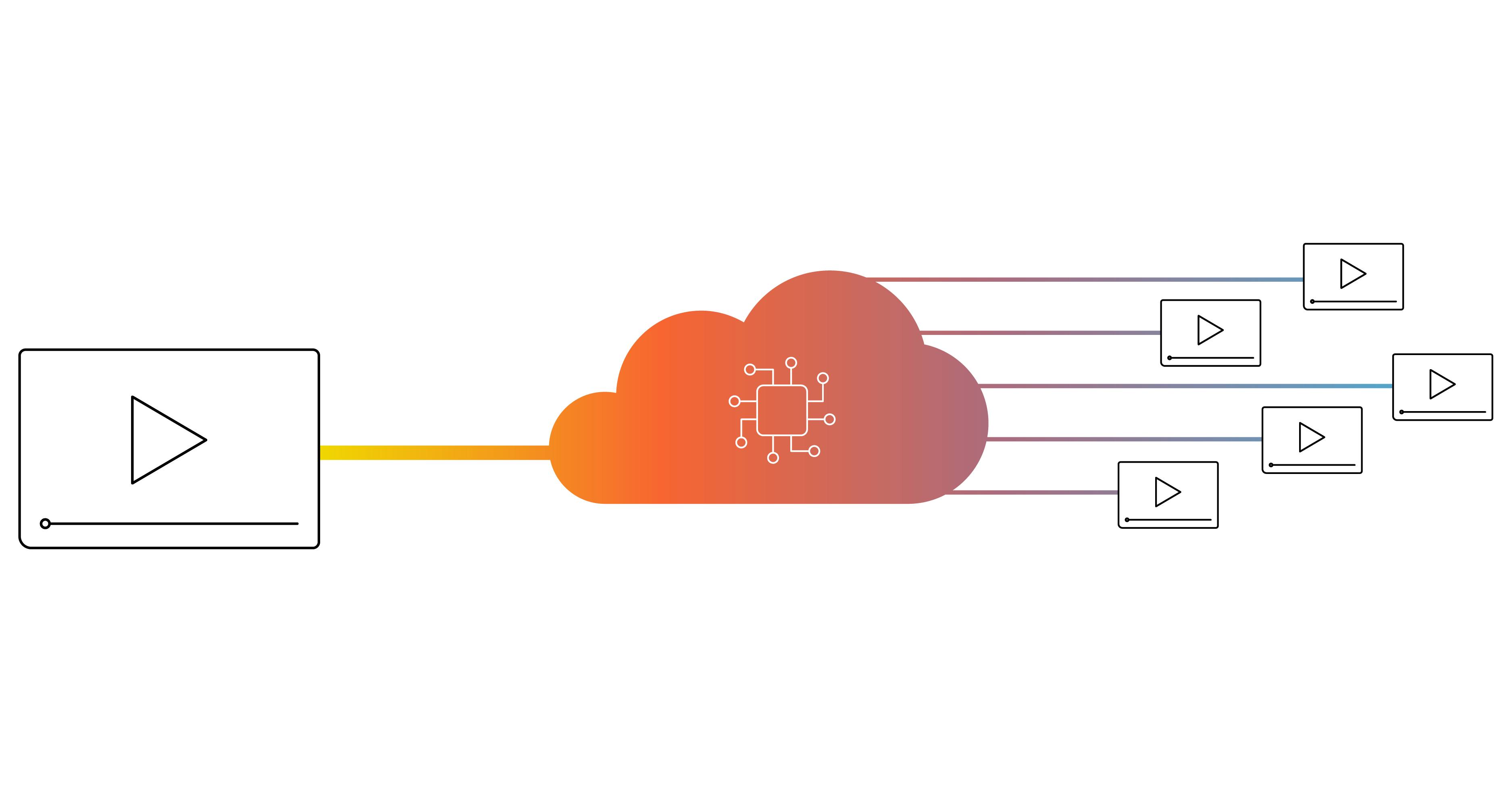Video Transcoding: The Basics And Advanced Solutions
Media

To remain competitive, OTT services recognize that videos must play flawlessly on any device—from fiber-connected smart TVs to smartphones with limited connectivity. Additionally, streaming delivery is a major expense, especially if storage space and bandwidth scale inefficiently.
A strategic approach to video transcoding is vital to every streaming service provider today. By optimizing file sizes and stream quality on a viewer-by-viewer basis, these expenses can be significantly reduced while laying the foundation for cost-effective, long-term growth.
What Is Video Transcoding?
Transcoding is the process of converting a video file from one format to another. It involves ingesting a video, decoding it into an intermediary format, and then re-encoding it into the desired format.
Transcoding vs. Encoding
Encoding compresses raw data, which is often too large to stream, into a more manageable digital format. Transcoding, on the other hand, converts encoded files into other formats for delivery across different devices, platforms, and networks.
Transcoding vs. Transmuxing
When transcoding converts a video’s file format, this changes inherent attributes like bitrate, frame sizes, or video codec. Transmuxing, meanwhile, simply changes how a video is packaged for delivery; it doesn’t re-encode the video and audio data. So while transcoding affects things like bandwidth and storage, transmuxing addresses device compatibility.
How Does Video Transcoding Work?
Since it’s not an isolated process, understanding how transcoding works is best done in context with its place in the streaming workflow—from ingest to delivery.
Video Ingest
Before videos are transcoded, the files are uploaded into a content management system (CMS), streaming platform, or cloud transcoding provider.
Ingest can be a manual process or automated through solutions like Brightcove’s Dynamic Ingest API. In this case, video source files are automatically retrieved directly from your preferred storage location and specified renditions of the source files are created. This allows you to tell the system exactly how to create the renditions.
For example, you can specify that for a 1080p 10Mbps video file, eight renditions will be created of varying bitrates and resolutions from 1920x1080 to 640x360 in HLS and DASH formats. The system allows for multiple profiles to be defined for an account, which means that a single Brightcove account can contain a variety of rendition types.
Video Transcoding
After ingest, source files are converted or transcoded into formats appropriate for various delivery use cases.
For example, imagine a smartphone video shot in 8K. It’s much too large to attach in most messaging apps, so those apps compress it. Depending on the size of the video, this can take an entire minute or more. Now imagine publishing the video to a website, social platform, and OTT app but converting it to the best viewing format for each endpoint in seconds. That’s what transcoding does.
As this is the most crucial part of the process, you’ll want to ensure you have a fast, high-quality solution that can meet all of your output needs. Brightcove’s Zencoder offers a cloud-based approach to deliver the fastest standard transcoding, industry-leading reliability, unmatched input file compatibility, and output support for all connected devices.
Video Packaging and Delivery
A key part of the transcoding process is packaging the media for streaming delivery or download. Streaming protocols today combine or package multiple renditions of varying quality (called Adaptive Bitrate Streaming or ABR) into a single resource described by a manifest file. This allows the stream to “adapt” to network conditions and maintain the viewing experience. The most commonly used streaming formats are HLS and DASH.
- HLS. HTTP Live Streaming is a streaming protocol developed by Apple. HLS supports multiple codecs for audio and video (h.264, HEVC), multiple audio and video renditions, and variable segment size. The manifest structure consists of a master manifest file (.m3u8) that references unique manifest files for each rendition. HLS is a mature format supported on all Apple platforms and a variety of other platforms and devices.
- DASH. Dynamic Adaptive Streaming over HTTP is a highly customizable streaming protocol developed by MPEG. DASH also supports multiple codecs for audio and video (h.264, HEVC), multiple audio and video renditions, and variable segment size. DASH is supported by a large variety of mobile devices, web browsers, connected devices and smart TVs. DASH is not natively supported on Apple devices.
Before playing the video content, the player analyzes factors like bandwidth and display size to select the most suitable rendition for the best viewing experience.
Advanced Video Solutions
Some advanced technologies select renditions based on additional context, like type of content, device capabilities, network conditions, and viewer behavior. For example, Brightcove’s Context-Aware Encoding (CAE) uses machine learning to analyze source files and build custom encoding ladders (sets of renditions) for each piece of content. This can improve the viewing experience as well as lower costs.
Even so, delivering video to multiple devices can quickly inflate storage and bandwidth costs, especially with DRM-controlled content. Digital Rights Management (DRM) providers like FairPlay and Widevine are only compatible on certain devices. So, if transcoding is needed for multiple endpoints, reaching a broad audience could mean storing a lot of large renditions.
To keep costs manageable, Brightcove also offers Dynamic Delivery. Unlike static delivery, where each rendition is packaged during video ingest, Dynamic Delivery stores renditions as smaller, fragmented MP4s. When a device requests the video, Just-in-Time (JIT) packaging creates the proper streaming and DRM format using the fMP4s, which dramatically cuts storage costs.
The ever-expanding matrix of devices, browsers, and networks requires content providers to have a solid understanding of video transcoding and the available options. While delivering content for diverse and evolving viewer needs can be complex, today’s advanced solutions make it both achievable and efficient.
This blog was originally written in 2016 by Ameet Bharwani and has been updated for accuracy and comprehensiveness.



